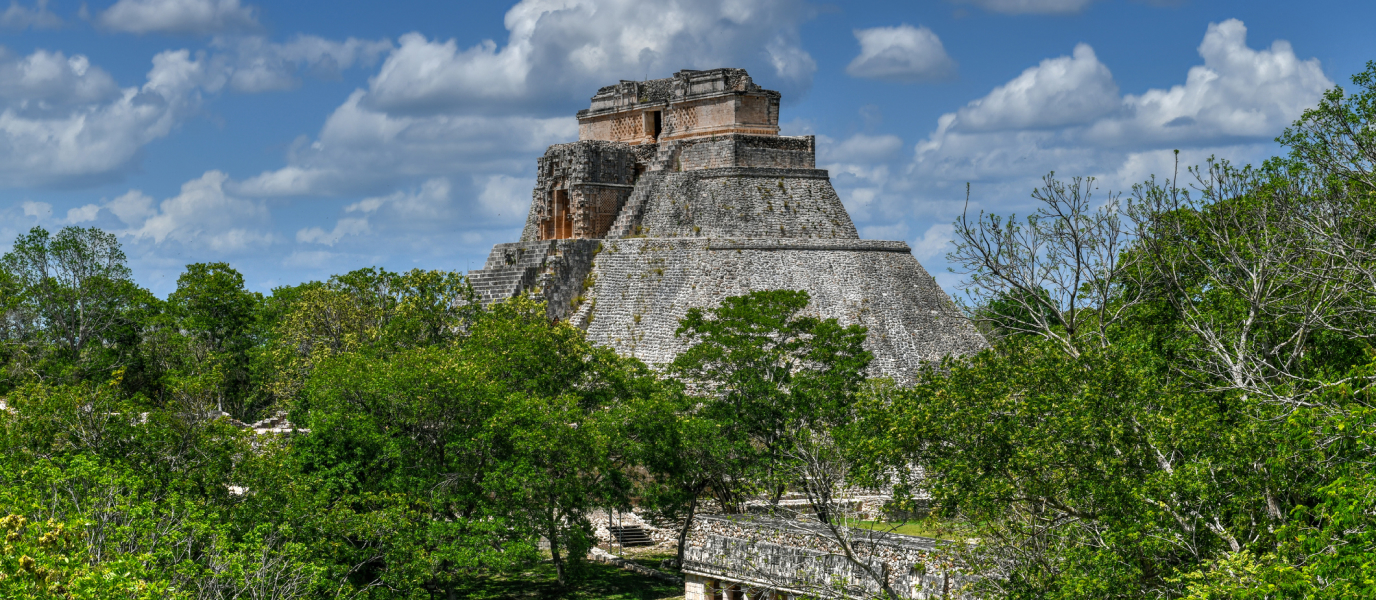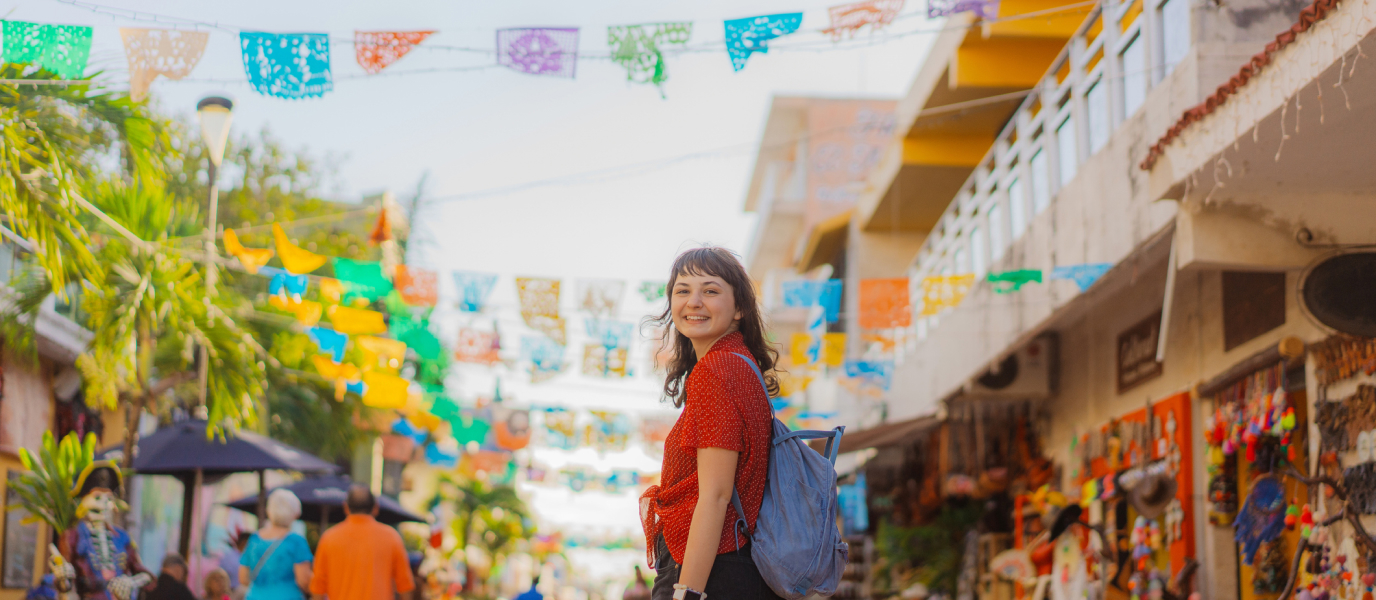About 50 miles south of the city of Merida, you can find one of the most important jewels of Maya architecture, the ancient city of Uxmal. This spectacular archaeological site, declared a World Heritage Site by UNESCO, is the best example of the so-called Puuc architecture, characteristic of the region of the same name –located between the states of Yucatan and Campeche – and one of the most relevant architectural styles of the Mayan World.
Its palatial buildings, richly decorated, and its imposing pyramids form an ensemble that shows, in great detail, the sophistication of the Maya civilization. Visiting Uxmal means enjoying a wonderful journey back in time to one of the most splendid moments in the history of the Yucatan Peninsula and, of course, of pre-Columbian Mexico.
The great city of the Puuc zone
In the middle of the Classic period, between the 5th and 10th centuries, a group of cities developed in a low hills area –Puuc means “hills” in the ancient Maya language– of the peninsular northwest. Uxmal, Kabah, Nohpat, Sayil, and Labna, among other cities, were linked by long sacbes (the white Maya roads). But also by a series of artistic and architectural characteristics that highlight the talent and originality of their creators. And Uxmal was, without a doubt, the greatest city of the Puuc area.
The monumentality of Uxmal and the complexity of its decorative elements, associated with the fundamental elements of the Mayan cosmogony (water, earth, the Sun, Venus…), confirm that the city was an important political, commercial, and religious center of the Mayan World; one of its main regional capitals. Thus, for nearly half a millennium, Uxmal dedicated itself to creating a very particular architectural complex. The city knew how to take advantage of the terrain to enhance the presence of its own buildings, making it one of the most interesting archaeological sites in Mexico.
Facades with elaborate stone mosaics, large crests, richly ornamented friezes, imposing masks representing Chaac, the god of rain, finely crafted sculptures… The city is a work of art of enormous scale that tells the story of its people, illustrates their beliefs, and, above all, underlines the incredible complexity reached by the societies of the time.
Visiting Uxmal: what you cannot miss
The archaeological site of the ancient Maya city of Uxmal comprises 15 groups of buildings distributed in a north-south axis about 1.2 miles long. This remarkable ensemble includes different palaces and temples built around large squares, all of them decorated with highly detailed sculptures and impressive geometric stone mosaics. A unique artistic display in the Maya area that must be explored calmly.
1. The Pyramid of the Magician
Also called the Pyramid of the Sorcerer or Pyramid of the Dwarf, it is the most spectacular building on the entire archaeological site. Composed of 5 superimposed structures from different periods, the 115 feet high pyramid was built between the 6th and 10th centuries. Although legend has it that it was built by a dwarf in a single night, hence its curious name. One of its most unique features is its oval base, possibly the only example of its kind in the entire Mayan World. Among its decorative elements, you can find masks of the god Chaac, geometric frets, and figures of serpents, among other motifs.
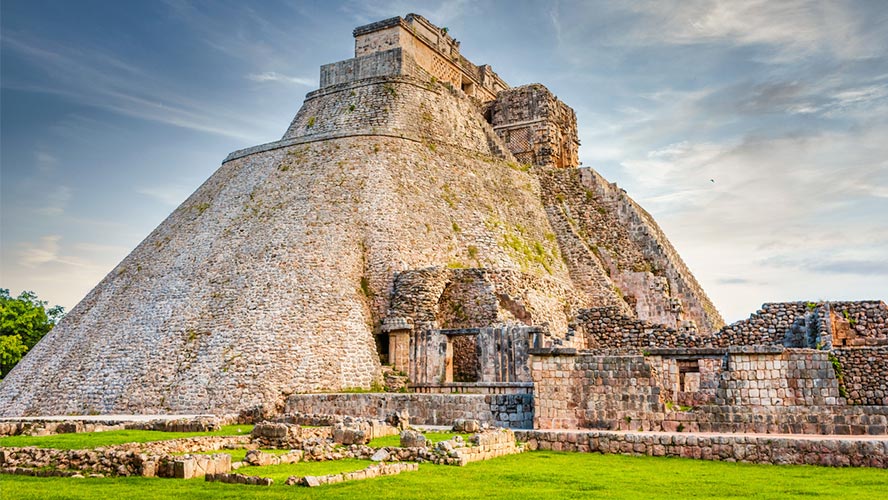
2. The Nunnery Quadrangle
Behind the Pyramid of the Magician, this great patio or square is one of the most important places in the city. With about 230 ft per side and impressive palaces in each section, the set shows the characteristic details of Puuc architecture: low, horizontal buildings, with a lower section of plain cloth and an upper section richly ornamented with geometric figures, Chaac masks, snakes… Several rooms are also part of each structure.
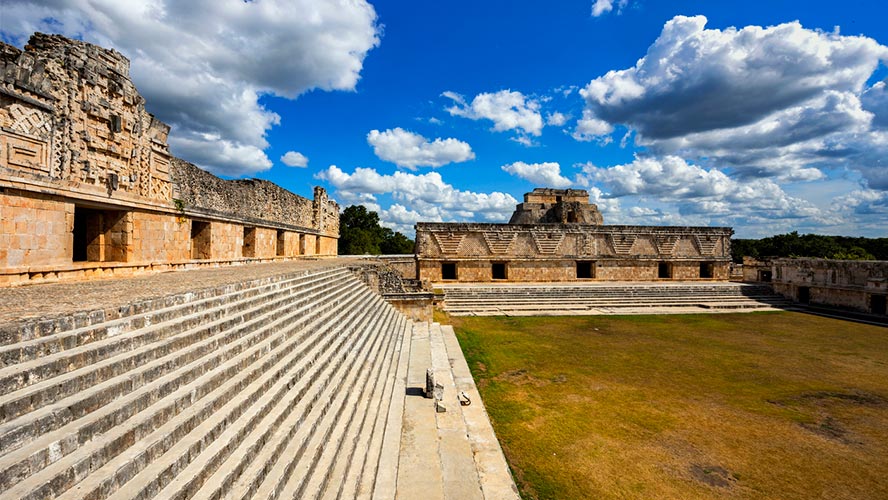
3. The Governor’s Palace
This great building built on a platform about 30 feet high is, simply put, one of the undisputed jewels of all pre-Hispanic architecture. In its about 330 ft of length (by 12 ft wide), it repeats the decorative patterns of the area: smooth walls and several entrance doors to its rooms in the lower part and a rich decoration in the upper half, including Chaac masks, motifs related to Venus, geometric shapes, snakes, etc.
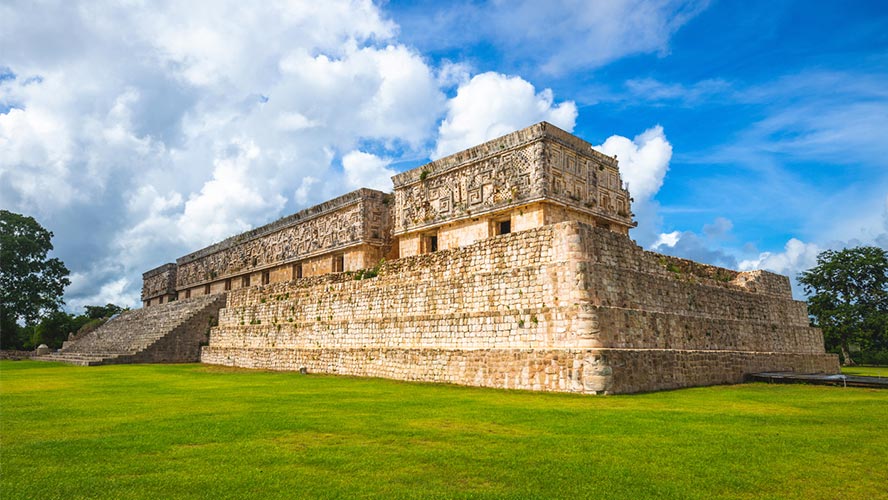
4. The Ball court
Although somewhat deteriorated, this structure located on a large esplanade, between the Nunnery Quadrangle and the Governor’s Palace, is no less relevant. It is the only ball court found in Uxmal, and only the two lateral parts of the playing area still stand. In the center of each section, there are reproductions of the rings through which the ball of this game, half sport, half religious ceremony, had to pass.
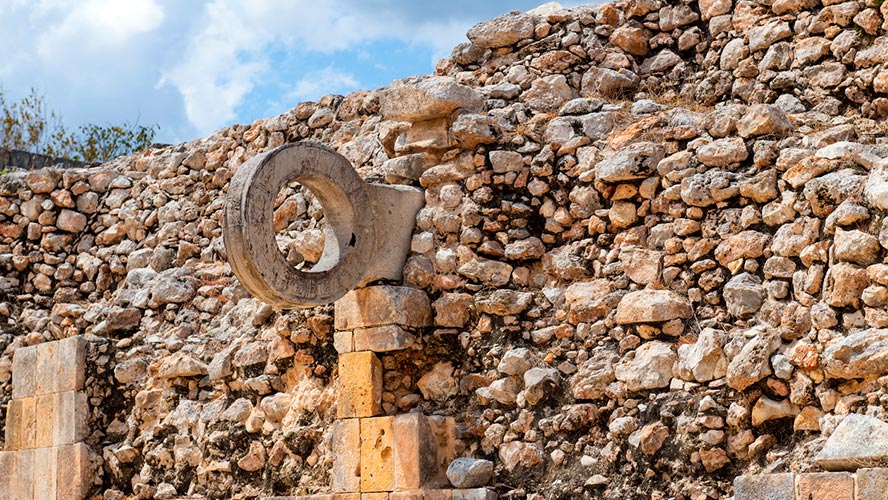
5. The Great Pyramid
Located beside the Governor’s Palace, at the southern end of the complex, this grand structure must have rivaled in importance with the Pyramid of the Magician. It is composed of nine staggered bodies and a large central staircase, although only its north façade has been restored. A large Chaac mask watches over the access of the temple located in the upper part, which, in turn, is decorated with figures of macaws, among other details. In addition, it is one of the few Maya pyramids that can still be climbed.
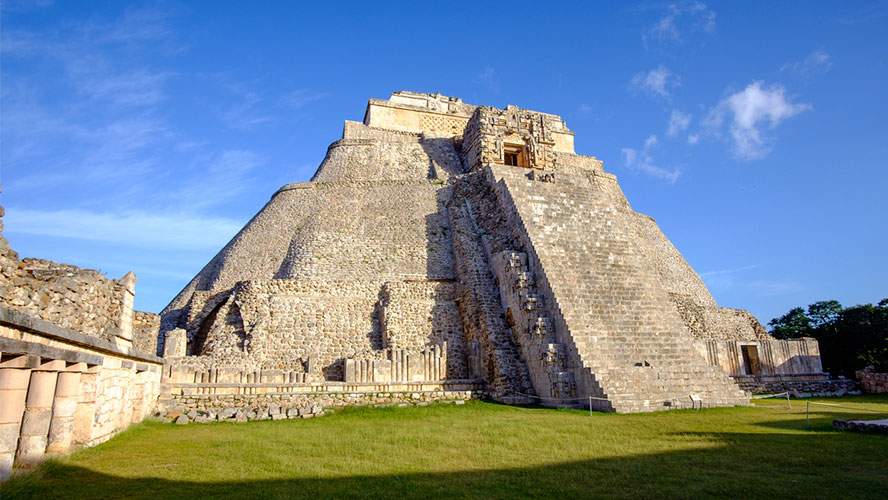
6. The House of the Doves
Next to the Great Pyramid, this building, which closes the south side of another quadrangular patio, once again shows the architectural dominance of the ancient Maya. Divided, in its center, by a typical false Mayan arch, the structure is crowned by a spectacular cresting of enormous dimensions. Formed by niches that resemble a dovecote, the pyramidal bodies in the cresting of the building are responsible for its peculiar name.
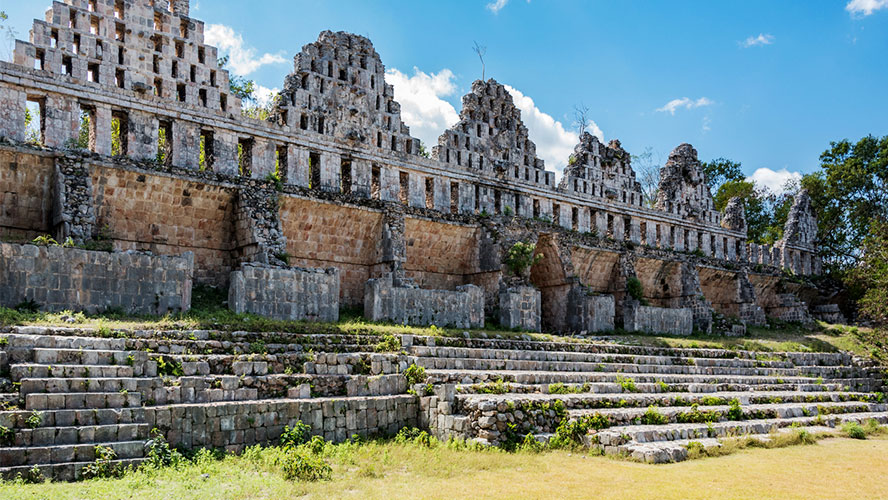
The House of the Turtles, the Platform of the Jaguars, the Old Pyramid, the Group of Columns, and the Platform of the Stela are just some of the many buildings that make part of this enormous city as well. With some 25,000 inhabitants in its peak moment, Uxmal represents today –together with Chichen Itza and some other great ancient Maya cities– one of the most important architectural legacies in the world.




































































